18 items found
Page 1 of 1
-
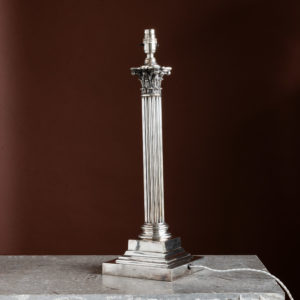
Large Edwardian silver plate Corinthian column table lamp,
£950Large Edwardian silver plate Corinthian column table lamp,
The well cast Corinthian capital above a fluted column on a stepped foot, GS stamped to the front edge. Circa 1905.£950 -
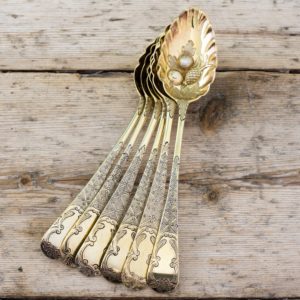
Set of six early nineteenth century silver gilt fruit spoons,
£600 the setSet of six early nineteenth century silver gilt fruit spoons,
Four of the set of six are London stamped, three dated 1811, one dated 1814. The other two stamped Edinburgh dated 1815. Each spoon having shape scoop section with reppouse berry details and engraved decoration to stem.£600 the set -
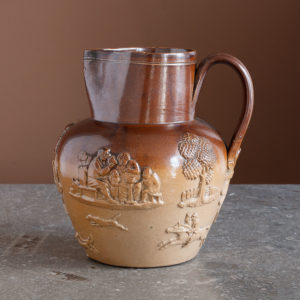
Doulton Lambeth Harvest Ware jug
£125 -
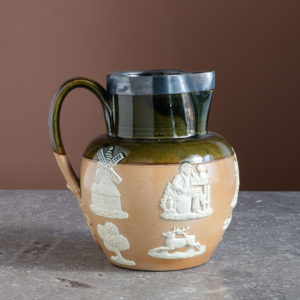
Doulton Lambeth Harvest Ware jug
£125Doulton Lambeth Harvest Ware jug
stoneware with patinated silver rim, with hallmarks to the silver and green glaze to the body£125 -

Edwardian cut glass water pitcher,
£125 -
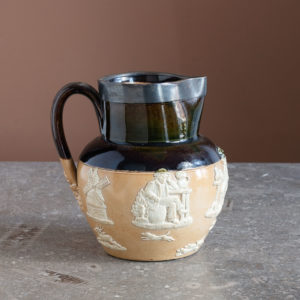
Doulton Lambeth Harvest Ware jug
£95Doulton Lambeth Harvest Ware jug
stoneware with patinated silver rim, with hallmarks to the silver and further impressed backstamps to the base, with green glaze to the body£95 -
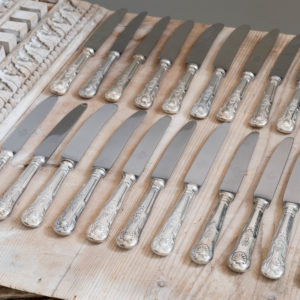
Twentieth century Kings Pattern Cutlery Knives From The Royal Air Force Club,128 Piccadilly London.
£90 A set of sixTwentieth century Kings Pattern Cutlery Knives From The Royal Air Force Club,128 Piccadilly London.
Each knife with stainless steel blade some etched with the Royal Air Force insignia, with handles produced in EPNS (Electro Plated Nickel Silver) using the King's pattern, allegedly made for King George III by far one of the most used and recognisable flatware design in history. Sold in sets of six. The cutlery would have graced the tables at lunches and suppers held at The Royal Air Force Club 128 Piccadilly London.£90 A set of six -
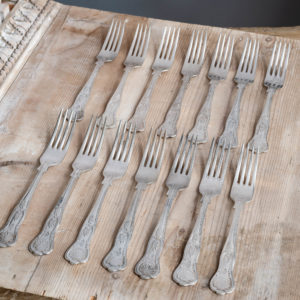
Twentieth century Kings Pattern Forks. From The Royal Air Force Club, 128 Piccadilly London.
£90 a set of sixTwentieth century Kings Pattern Forks. From The Royal Air Force Club, 128 Piccadilly London.
Each fork stamped with the Royal Air Force insignia, produced in EPNS (Electro Plated Nickel Silver) using the Kings pattern, allegedly made for King George III by far one of the most used and recognisable flatware design in history. Sold in sets of six. The cutlery would have graced the tables at lunches and suppers held at The Royal Air Force Club 128 Piccadilly London.£90 a set of six -
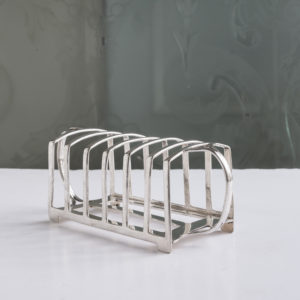
1930s electroplated nickel six section toast rack,
£80 -
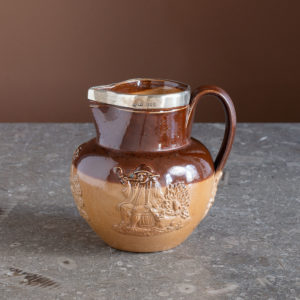
Doulton Lambeth Harvest Ware jug,
£65Doulton Lambeth Harvest Ware jug,
silver rimmed stoneware, with hallmarks to the silver and further impressed stamps to the base£65 -
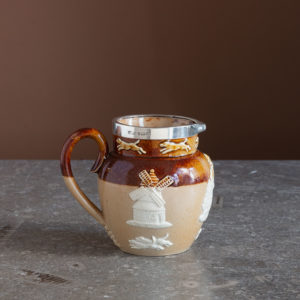
Doulton Lambeth Harvest Ware jug,
£65Doulton Lambeth Harvest Ware jug,
silver rimmed stoneware, with hallmarks to the silver and further impressed stamps to the base£65 -

Doulton Lambeth Harvest Ware jug
£65Doulton Lambeth Harvest Ware jug
stoneware body with line-engraved silver rim, with hallmarks to the silver and further impressed stamps to the base£65 -

Doulton Lambeth Harvest Ware jug
£65Doulton Lambeth Harvest Ware jug
silver rimmed stoneware, with hallmarks to the silver and further impressed stamps to the base£65 -
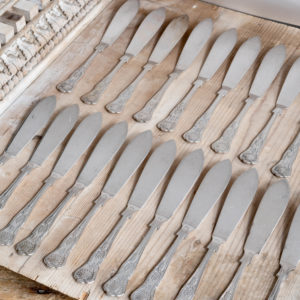
Twentieth century Kings Pattern fish knives from The Royal Air Force Club
£60 a set of sixTwentieth century Kings Pattern fish knives from The Royal Air Force Club
each fish knife stamped with the Royal Air Force insignia, produced in EPNS (Electro Plated Nickel Silver) using the Kings pattern, allegedly made for King George III by far one of the most used and recognisable flatware design in history. Sold in sets of six. The cutlery would have graced the tables at lunches and suppers held at The Royal Air Force Club, 128 Piccadilly, London£60 a set of six -
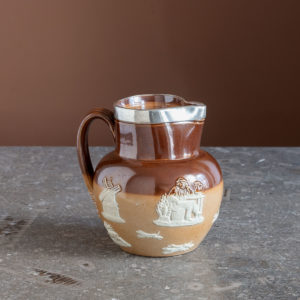
Doulton Lambeth Harvest Ware jug
£45Doulton Lambeth Harvest Ware jug
stoneware with silver rim, with hallmarks to the silver and further impressed stamps to the base, small chip to the inside of the rim.£45 -
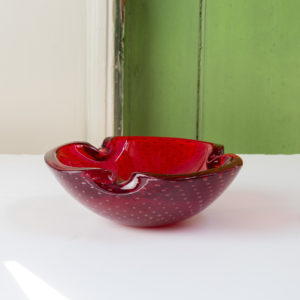
Red bubble glass ashtray,
£30 -
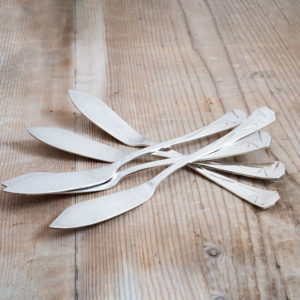
Set of fish knives
£25 the five
Featured Items
-
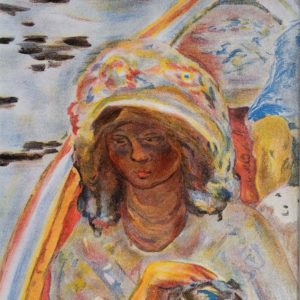
Portrait Fragment by Pierre Bonnard, Verve Vol 2 / No. 5-6.
£600Portrait Fragment by Pierre Bonnard, Verve Vol 2 / No. 5-6.
The Verve Review was a purposefully luxurious. It ran from 1937 to 1960, but with only 38 editions available, due to the high degree of design and editorial work dedicated to each issue. Each edition contained unique lithographic prints, commissioned by the editor, and each cover a double-page lithograph elaborated by one of the artists contained within. It was the brainchild of its editor Stratis Eleftheriades, a Greek National who moved to Paris in the early thirties to take part in the growing Modernist movement, writing under the name of Teriade.£600 -
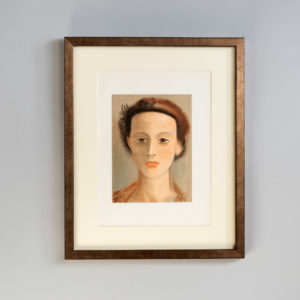
Portrait by Andre Derain, Verve Vol 2 / No. 5-6.
£800Portrait by Andre Derain, Verve Vol 2 / No. 5-6.
The Verve Review was a purposefully luxurious. It ran from 1937 to 1960, but with only 38 editions available, due to the high degree of design and editorial work dedicated to each issue. Each edition contained unique lithographic prints, commissioned by the editor, and each cover a double-page lithograph elaborated by one of the artists contained within. It was the brainchild of its editor Stratis Eleftheriades, a Greek National who moved to Paris in the early thirties to take part in the growing Modernist movement, writing under the name of Teriade.£800 -
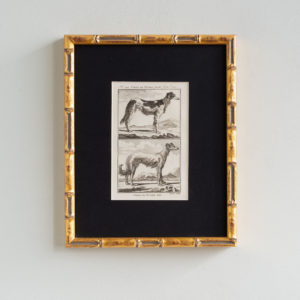
18th Century French Engravings of Dogs
£175 each18th Century French Engravings of Dogs
Published for, Histoire naturelle, générale et particulière (1749–1804), which was the first modern attempt to systematically present all existing knowledge in the fields of natural history, geology, and anthropology.£175 each -
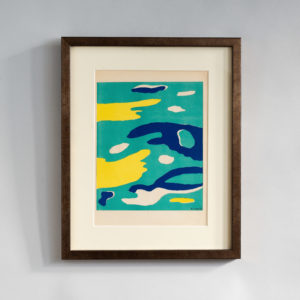
The Four Elements, Water by Fernand Leger, Verve Vol. 1 / No. 1.
£600The Four Elements, Water by Fernand Leger, Verve Vol. 1 / No. 1.
The Verve Review was a purposefully luxurious. It ran from 1937 to 1960, but with only 38 editions available, due to the high degree of design and editorial work dedicated to each issue. Each edition contained unique lithographic prints, commissioned by the editor, and each cover a double-page lithograph elaborated by one of the artists contained within. It was the brainchild of its editor Stratis Eleftheriades, a Greek National who moved to Paris in the early thirties to take part in the growing Modernist movement, writing under the name of Teriade.£600

